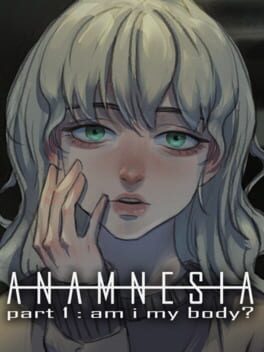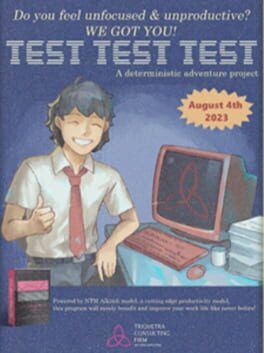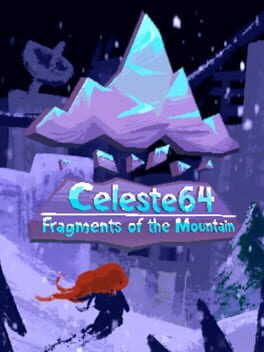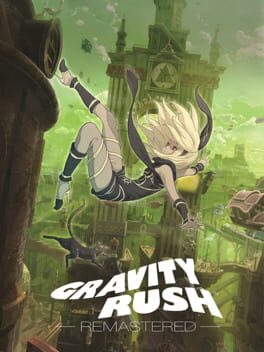Cooper2103
I had the opportunity to test the game before launch and I've got to say, I'm pretty impressed. In this fascinating take on the Visual-Novel genre you experience the intriguing growth of character, exceptional circumstances can bring, by accompanying the main character - Adrian - through the trials and tribulations of the so called "Truth Game".
Dealing with themes like existentialism, trauma, love and art Simon Herbig crafted a thought-provoking narrative about the way choices can make (or don't make) us into who we are.
Talking about gameplay, Herbig puts a nice spin on Visual-Novel interaction, by incorporating the backlog feature into the narrative, letting you change the direction the story may take, whether you use the backlog or not.
Visuals and music also compliment the storytelling tremendously, with gritty background- and admirable character art as well as a somber but gripping soundtrack, Anamnesia is a fantastic experience.
Of course you need an appreciation for the Visual-Novel genre to really enjoy what is given here in the first place. Genre typical, interaction is minimal even though impactful, but nevertheless you don't really do much more than reading all the way through. And to criticize the story a bit I want to say, that for me it was quite difficult to sympathize with Adrian and another character named Valerie at first but ... I think that is pretty much the point, as both grow in beautiful ways over the course of the game, but nevertheless those two can be a bit off putting at the beginning of the story.
Also, as a game that is releasing in multiple parts over the course of the coming years, you - naturally - don't really get a definitive ending at the end of part 1. Most of the questions I had, regarding the broader mystery presented, remain unanswered ... but again, that is absolutely the point of part 1 and I would be lying if I wouldn't say that I am eagerly awaiting part 2, to still my intrigue for whatever Herbig is constructing here.
All in all I can say without the shadow of a doubt that if you like mystery Stories, especially the works of Kotaro Uchikoshi and/or Visual-Novels in general, you will absolutely adore Anamnesia. A thematically mature character study and exploration of one of the biggest questions every single one of us human beings can ask ourselves: Who am I?
Dealing with themes like existentialism, trauma, love and art Simon Herbig crafted a thought-provoking narrative about the way choices can make (or don't make) us into who we are.
Talking about gameplay, Herbig puts a nice spin on Visual-Novel interaction, by incorporating the backlog feature into the narrative, letting you change the direction the story may take, whether you use the backlog or not.
Visuals and music also compliment the storytelling tremendously, with gritty background- and admirable character art as well as a somber but gripping soundtrack, Anamnesia is a fantastic experience.
Of course you need an appreciation for the Visual-Novel genre to really enjoy what is given here in the first place. Genre typical, interaction is minimal even though impactful, but nevertheless you don't really do much more than reading all the way through. And to criticize the story a bit I want to say, that for me it was quite difficult to sympathize with Adrian and another character named Valerie at first but ... I think that is pretty much the point, as both grow in beautiful ways over the course of the game, but nevertheless those two can be a bit off putting at the beginning of the story.
Also, as a game that is releasing in multiple parts over the course of the coming years, you - naturally - don't really get a definitive ending at the end of part 1. Most of the questions I had, regarding the broader mystery presented, remain unanswered ... but again, that is absolutely the point of part 1 and I would be lying if I wouldn't say that I am eagerly awaiting part 2, to still my intrigue for whatever Herbig is constructing here.
All in all I can say without the shadow of a doubt that if you like mystery Stories, especially the works of Kotaro Uchikoshi and/or Visual-Novels in general, you will absolutely adore Anamnesia. A thematically mature character study and exploration of one of the biggest questions every single one of us human beings can ask ourselves: Who am I?
2023
A clever reimagining of the first Celeste level as a 3D-Collectathon. The controls can feel a bit wonky, especially when you get to the more precise parts of the game and I most certainly had my fair share of problems keeping track of Madeline while trying to adjust the camera. But nevertheless, I just felt this deep joy in my heart collecting every strawberry; running, climbing and dashing through these ruinous remnants of the Forsaken City in glorious N64 optic.
In the same vein, the music is also super chill, giving of Super Mario 64 vibes, well... up until you get to the cassette level parts of the game when everything just turns into Super Mario Sunshine all of a sudden, funky acapella included. Herein lie the most difficult platforming challenges of the game; and as frustrating as they can get, I honestly felt a great sense of liberation and accomplishment when finishing those, wishing there would be even more game left after collecting the very final strawberry and reminiscing about the amazing time Maddy Thorson and her team gave us with all what Celeste has had to offer up until now.
In the same vein, the music is also super chill, giving of Super Mario 64 vibes, well... up until you get to the cassette level parts of the game when everything just turns into Super Mario Sunshine all of a sudden, funky acapella included. Herein lie the most difficult platforming challenges of the game; and as frustrating as they can get, I honestly felt a great sense of liberation and accomplishment when finishing those, wishing there would be even more game left after collecting the very final strawberry and reminiscing about the amazing time Maddy Thorson and her team gave us with all what Celeste has had to offer up until now.
2017
Such a curious little platformer. Innovating the genre by making you play as a character that can neither jump nor run, you have to maneuver the body of Noodle the snake through hazardous elemental jungle gyms; wriggling over hill and dale, diving through labyrinthian ponds, avoiding dazzling magma pits and first and foremost fasten his body around every bamboo stick the developers could muster.
Moving Noodles head around feels really snappy; wrapping around the level structure and pulling his body after him just to find a safe hold on those wacky constructs you encounter, before already thinking about your next move, transferring from a stoney elevator to a bamboo Ferris wheel over a fiery pit or better, nothing but the endless abyss of the cloudy sky below you, feels unbelievably exhilarating.
Mastering the movement in “Snake Pass” can be quite the challenge, but thankfully the developers give you a very helpful ability to ease you into the gameplay loop: You can just strengthen the grip on Noodles body by the press of a button, making it easier to organize traversal over the more dangerous parts of the Gameworld as you don’t have to think as much about the gravity trying to pull on the weight of your character. Even so, holding the button down continuously makes Noodle quite reluctant to keep moving, so that you must find a rhythm in which you press and release the “grip”, “head lifting” and “going forward” buttons to successfully climb and wrap to the goal.
The more I played, the safer I felt to just ignore the existence of that “grip” ability, to just dance around those obstacle courses with ease, reaching the most difficult to get to collectibles without a sweat and cherishing the mastering of these unique platforming skills.
And although the sloppy camera can make maneuvering around from time to time a bit more of a hassle than it should be, even if and when you mastered the movement of Noodle, and the tension building story is ending in an absolute cop out, leaving me surprisingly disappointed on the narrative front, I really adore this twist on the platforming genre and hope to see many more developers try to innovate in the same vein as “Snake Pass” in the future.
Moving Noodles head around feels really snappy; wrapping around the level structure and pulling his body after him just to find a safe hold on those wacky constructs you encounter, before already thinking about your next move, transferring from a stoney elevator to a bamboo Ferris wheel over a fiery pit or better, nothing but the endless abyss of the cloudy sky below you, feels unbelievably exhilarating.
Mastering the movement in “Snake Pass” can be quite the challenge, but thankfully the developers give you a very helpful ability to ease you into the gameplay loop: You can just strengthen the grip on Noodles body by the press of a button, making it easier to organize traversal over the more dangerous parts of the Gameworld as you don’t have to think as much about the gravity trying to pull on the weight of your character. Even so, holding the button down continuously makes Noodle quite reluctant to keep moving, so that you must find a rhythm in which you press and release the “grip”, “head lifting” and “going forward” buttons to successfully climb and wrap to the goal.
The more I played, the safer I felt to just ignore the existence of that “grip” ability, to just dance around those obstacle courses with ease, reaching the most difficult to get to collectibles without a sweat and cherishing the mastering of these unique platforming skills.
And although the sloppy camera can make maneuvering around from time to time a bit more of a hassle than it should be, even if and when you mastered the movement of Noodle, and the tension building story is ending in an absolute cop out, leaving me surprisingly disappointed on the narrative front, I really adore this twist on the platforming genre and hope to see many more developers try to innovate in the same vein as “Snake Pass” in the future.




